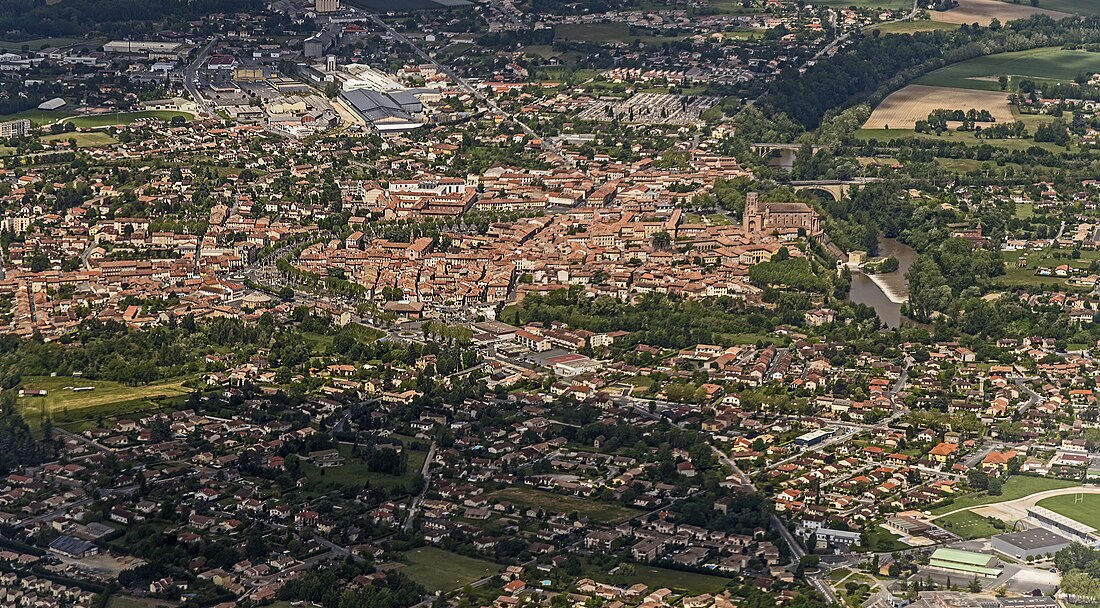Top Qs
Timeline
Chat
Perspective
Lavaur, Tarn
Commune in Occitania, France From Wikipedia, the free encyclopedia
Remove ads
Lavaur (French pronunciation: [lavɔʁ]; Occitan: La Vaur) is a commune in the Tarn department in southern France.
Remove ads
History
Lavaur was taken in 1211 by Simon de Montfort during the wars of the Albigenses, a monument marking the site where Dame Giraude de Laurac (Lady of Lavaur) was killed,[3] being thrown down a well and stoned to death.[4] The town was also taken several times during the religious wars of the 16th century.
Geography
Lavaur stands on the left bank of the Agout, which is here crossed by a railway-bridge and a fine stone bridge of the 1770s.[5][6] It lies 36 km southwest of Albi and 32 km east of Toulouse.
Demographics
This graph was using the legacy Graph extension, which is no longer supported. It needs to be converted to the new Chart extension. |
Sights

- From 1317 until the French Revolution Lavaur was the seat of a bishopric; Lavaur Cathedral, dedicated to Saint Alan, was built for this purpose, dating from the 13th, 14th and 15th centuries, with an octagonal bell-tower. A second, smaller square tower contains a jaquemart (a statue which strikes the hours with a hammer) of the 16th century. In the bishops garden is the statue of Emmanuel, comte de Las Cases, one of the companions of Napoleon at Saint Helena.[5] Historical monument since 1911.
- Church of Saint-François. (XIV c.). Historical monument since 1996.
- Tower of Rounds. (XIII c.) Historical monument since 1971.
- Viaduc de Lavaur. 1884. Engineer Paul Séjourné.
- Pont de Lavaur. Stone masonry road bridge over the Agout. Built between 1773 and 1791. Designed for the Estates of Languedoc by Joseph-Marie de Saget, known as De Saget elder.
Remove ads
Economy
This section is largely based on an article in the out-of-copyright Encyclopædia Britannica Eleventh Edition, which was produced in 1911. (June 2025) |
The town carries on distilling and flour-milling and the manufacture of brushes, plaster and wooden shoes.[5]
Notable residents
- Pierre Fabre, founder of Laboratoires Pierre Fabre[8]
- Étienne de Voisins-Lavernière (1813–1898), French deputy and then senator for Tarn
Miscellaneous
There is a subprefecture and a tribunal of first instance (a lower Court of Justice).[5]
Climate
Remove ads
See also
References
Wikiwand - on
Seamless Wikipedia browsing. On steroids.
Remove ads





